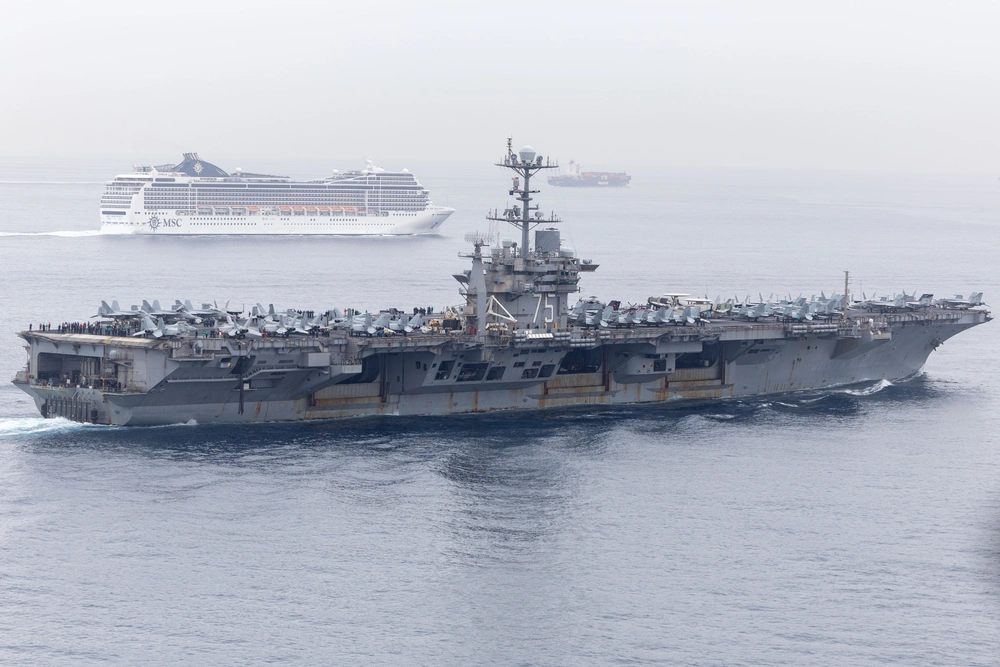
The Nimitz-class aircraft carrier USS Harry S. Truman (CVN 75), transits the Strait of Gibraltar, Nov. 25 US Navy
The USS Harry S. Truman (CVN 75), a Nimitz-class aircraft carrier of the US Navy, collided with the Panama-flagged bulk carrier Besiktas-M at approximately 11:46 p.m. local time on February 12, while operating near the Suez Canal, close to Port Said, Egypt, in the Mediterranean Sea.
The US Navy confirmed that the carrier’s propulsion systems remain unaffected, and its condition is stable. An investigation into the incident is underway, with more details expected as they become available. Gerald R. Ford is the US Navy’s newest, largest and most advanced aircraft carrier.
“The collision did not endanger the Harry S. Truman (CVN 75) as there are no reports of flooding or injuries. The propulsion plants are unaffected and in a safe and stable condition,” the navy said.
The USS Harry S. Truman had recently been deployed in the Red Sea as part of US Navy efforts to safeguard key shipping lanes from attacks by Yemeni Houthi forces. Its position at the time of the collision suggests the carrier was returning to the Red Sea after a port visit to Souda Bay, Greece.
Meanwhile, Besiktas-M, a nearly 200-meter-long bulk carrier, had just transited the Suez Canal and was headed toward the Black Sea port of Constanta, Romania, according to Automatic Identification System (AIS) data.
The security situation in the Red Sea remains fragile as concerns have resurfaced that the Houthis may renew their threats against shipping in the region, especially after US President Donald Trump’s recent proposal to take over Gaza and displace millions of Palestinians. The Suez Canal Authority has been eager to attract shipping lines to transit the canal, offering pricing incentives to bolster traffic. However, the continuously changing situation, influenced by geopolitical events, has made these efforts increasingly difficult, as persistent safety and security risks continue to affect confidence in the region’s stability.

